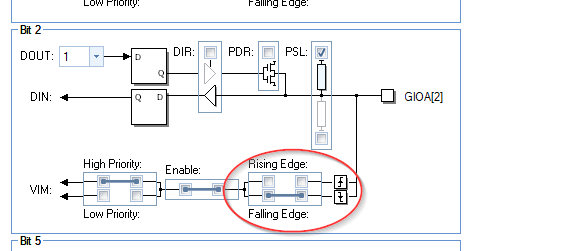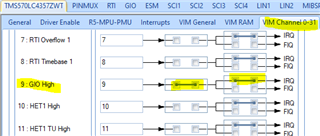Other Parts Discussed in Thread: HALCOGEN
Hi,
I am still new using TMS570LC4357 HDK, my goal is to trigger an ISR if there's a falling or a rising edge on GIOA[2] & [3].
After I setting in Halcogen as below, I need some example code to call the interrupt function.

Is there any example for that?
Thanks & Regards,
Lukman



